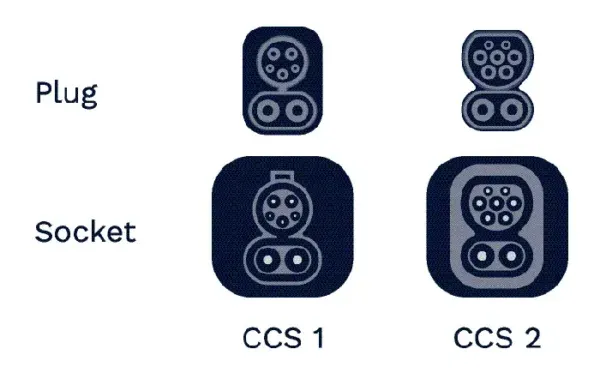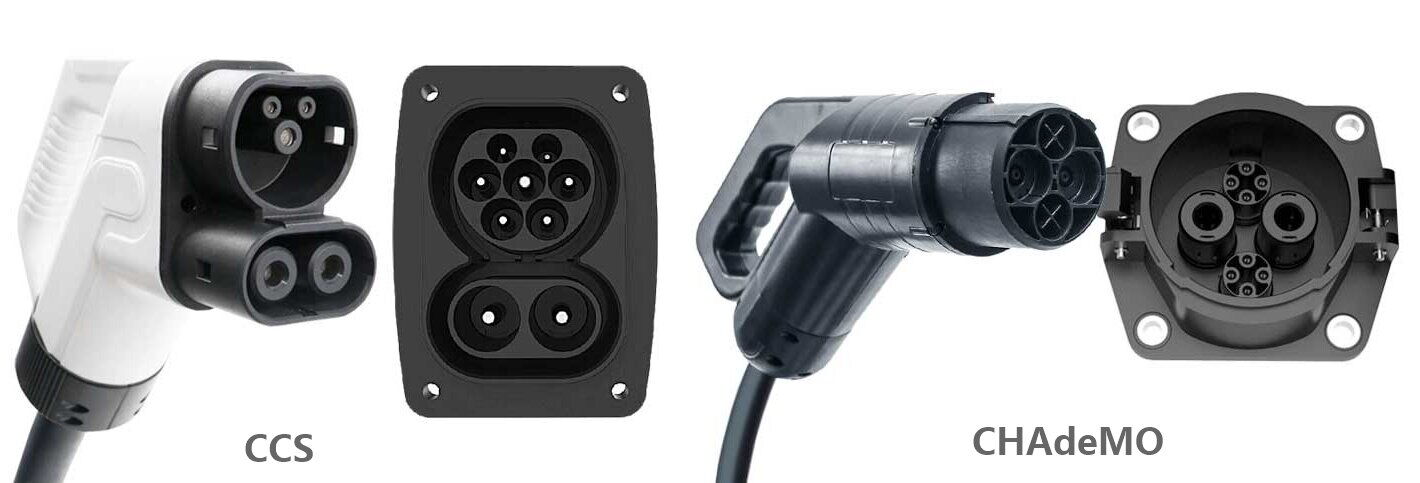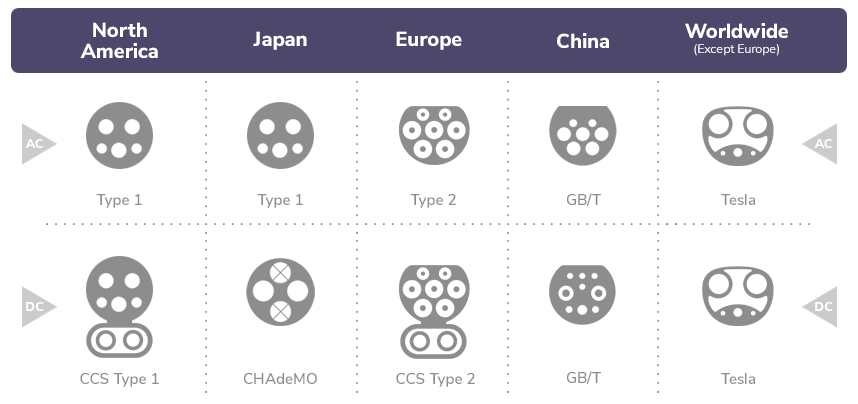On this page
The electric vehicle (EV) market has seen significant growth in recent years, driving the development of various charging technologies. Among these, CHAdeMO and CCS are two prominent standards for DC fast charging. But what distinguishes these two systems, and which one might be better suited for different use cases? This article explores the differences, advantages, and disadvantages of CHAdeMO and CCS.


CHAdeMO facilitates direct high-voltage current to the vehicle's battery, enabling much faster charging compared to traditional AC systems.
Rapid charging stations using CHAdeMO are typically rated at 50 kW or higher, allowing most EVs to charge fully within an hour.
One standout feature of CHAdeMO is its support for bidirectional charging. Electricity can flow not only from the charger to the vehicle but also in reverse—from the vehicle back to a home or even the grid. This makes CHAdeMO integral to vehicle-to-grid (V2G) and vehicle-to-home (V2H) applications.
CHAdeMO connectors are separate from Type 1 and Type 2 AC connectors commonly used in Europe. The design includes additional pins specifically for high-speed DC charging.
CHAdeMO has gained significant traction in Japan, with widespread deployment in public charging networks. However, its adoption in other regions, such as Europe and North America, has been slower due to competition from newer charging standards like CCS.
The Combined Charging System (CCS) is a versatile and standardized charging protocol developed to streamline EV charging. Unlike CHAdeMO, CCS supports both AC and DC charging through a single connector, simplifying the charging process for EV users.

CCS combines an AC Type 1 or Type 2 connector with two additional pins for DC charging. This allows vehicles to use the same port for both AC and DC charging.
CCS chargers support a wide range of power outputs, from lower levels for home charging to ultra-fast rates exceeding 350 kW at public charging stations. This scalability caters to diverse EV charging needs.
CCS has become the preferred standard in Europe and North America, largely due to its integration into existing Type 1 and Type 2 charging infrastructure. Major automakers, including Tesla (in Europe), Volkswagen, and BMW, support CCS, further solidifying its dominance.
With higher power capacity and compatibility with ultra-fast charging technologies, CCS is well-positioned for the future of EV charging.

CHAdeMO: Typically supports charging speeds up to 50 kW, though newer versions (CHAdeMO 3.0) can handle up to 400 kW. However, this higher power rating is not yet widely implemented.
CCS: Offers a broader range of power outputs, with some chargers capable of delivering over 350 kW, making it more suitable for ultra-fast charging applications.
CCS: Offers a broader range of power outputs, with some chargers capable of delivering over 350 kW, making it more suitable for ultra-fast charging applications.
CHAdeMO: Features a unique connector for DC charging, separate from AC charging ports. This requires vehicles to have two charging ports—one for CHAdeMO and another for AC.
CCS: Integrates AC and DC charging into a single connector, providing greater convenience for users and reducing vehicle complexity.
CCS: Integrates AC and DC charging into a single connector, providing greater convenience for users and reducing vehicle complexity.
CHAdeMO: Leads in bidirectional charging capabilities, with established support for V2G and V2H applications.
CCS: While CCS is gradually adopting bidirectional functionality, it currently lags behind CHAdeMO in this aspect.
CCS: While CCS is gradually adopting bidirectional functionality, it currently lags behind CHAdeMO in this aspect.
CHAdeMO: Dominates in Japan and certain parts of Asia. Adoption in Europe and North America is more limited, as CCS gains ground.
CCS: The standard in Europe and North America, with increasing adoption globally, driven by support from automakers and governments.
CCS: The standard in Europe and North America, with increasing adoption globally, driven by support from automakers and governments.
CHAdeMO: Limited compatibility with newer EVs in Europe and North America. Many automakers have shifted focus to CCS.
CCS: Universally compatible with most modern EVs in Europe and North America, thanks to its integration with Type 1 and Type 2 connectors.
CCS: Universally compatible with most modern EVs in Europe and North America, thanks to its integration with Type 1 and Type 2 connectors.
With over a decade of operation, CHAdeMO is a trusted standard for DC fast charging.
Its V2G and V2H capabilities make it ideal for energy storage and grid integration.
CHAdeMO chargers are straightforward and easy to use, ensuring a smooth charging experience.
A single connector for both AC and DC charging simplifies vehicle design and reduces user confusion.
CCS supports a wide range of power outputs, from slow AC to ultra-fast DC charging, making it versatile for different applications.
With broad adoption in Europe and North America, CCS offers a unified charging experience across regions.
The ability to handle ultra-fast charging makes CCS well-suited for next-generation EVs with larger battery capacities.
The choice between CHAdeMO and CCS depends on regional preferences, vehicle compatibility, and specific use cases. Here’s a quick summary:
Choose CHAdeMO if: You’re in Japan or own an EV with bidirectional charging capabilities and want to explore V2G or V2H applications.
Choose CCS if: You prioritize fast charging, compatibility with a wide range of vehicles, and live in regions like Europe or North America where CCS is dominant.
Choose CHAdeMO if: You’re in Japan or own an EV with bidirectional charging capabilities and want to explore V2G or V2H applications.
Choose CCS if: You prioritize fast charging, compatibility with a wide range of vehicles, and live in regions like Europe or North America where CCS is dominant.
The competition between CHAdeMO and CCS is reflective of the dynamic nature of the EV industry. While CHAdeMO continues to innovate with features like bidirectional charging, CCS is emerging as the global standard due to its integrated design and widespread support.
However, the EV market may eventually consolidate around a single standard as automakers and governments push for interoperability. For now, both CHAdeMO and CCS play crucial roles in advancing EV adoption and creating a sustainable future.
However, the EV market may eventually consolidate around a single standard as automakers and governments push for interoperability. For now, both CHAdeMO and CCS play crucial roles in advancing EV adoption and creating a sustainable future.